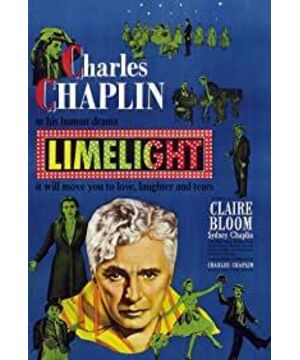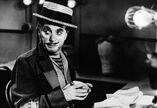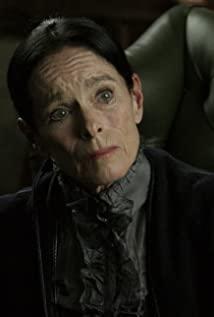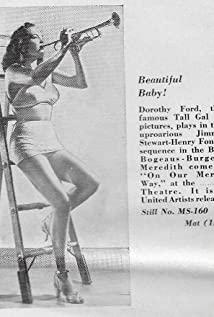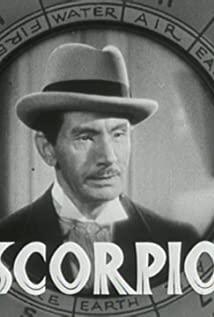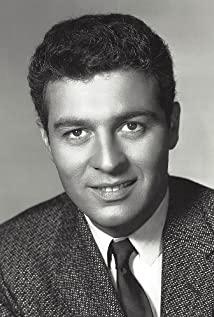There are many great and famous films of Chaplin, but I think his best work is not his famous silent films, but the film "The Spring and Autumn on the Stage" that he shot in the sunset era of his life.
Originally published in my personal public account Karmacore
There are many great and famous films of Chaplin, but I think his best work is not his famous silent films, but the film "The Spring and Autumn on the Stage" that he shot in the sunset era of his life.
Limelight:
n.
- the focus of attention or public interest
- a lamp used as an early form of stage lighting in which quicklime is heated to produce a brilliant light
- the light that a limelight lamp produces
Chinese definition: the center of public attention
The plot of "The Spring and Autumn of the Stage" is not complicated: Calvero, played by Chaplin, was a comedian who was all-powerful on the stage, but he was not with me at times, and he could not escape the fate of losing the audience in the twilight of his life. One day, Calfero, who was addicted to alcohol all day, rescued Thereza, a ballerina who tried to commit suicide by gas poisoning. After Calvero learned that the reason for her suicide was that she could no longer dance because of rheumatism (in fact, it was a mental trauma), in addition to taking good care of her in life, he also performed his best funny comedy for her to make her happy , I hope she recovers as soon as possible and can return to the stage as soon as possible. One day, Thereza finally stood up again, and Calvero also returned to the stage, but the day was not so unsatisfactory... This is two broken hearts like branches trembling in the cold wind, hugging each other to keep warm and looking for hope The story of "The Spring and Autumn on the Stage" on IMDB is very simple:
A fading comedian and a suicidally despondent ballet dancer must look to each other to find meaning and hope in their lives.
Why do I think this is Chaplin's best work? What's the point of it?
The great thing about Chaplin is that he is Chaplin, not some other burlesque comedy or the unknown clown of a traveling circus.
Chaplin's films usually have obvious imprints of the times: "Modern Times" (Modern Times) is set in the economic depression of the 1920s and 1930s in the United States, and Chaplin plays the role of the big machine in the assembly line all day long. Workers who perform repetitive tasks; "Gold Rush" is set in 1898, when the gold rush in the American West did not stop, and Chaplin's homeless went to Alaska to pan for gold; "The Great Dictator" (The Great Dictator) ) was taken during the darkest period of Hitler's rule, and the satire and vilification of Hitler in the film are very obvious. He seems to be telling us that, in the context of the great era, no matter what position you are in, and what position you take, you will inevitably be involved in the vicissitudes of the era. Unlikely. At the same time, the films of Buster Keaton, another master of comedy in the silent film era, will relatively weaken the background of the era, and I feel that it will focus more on personal emotions.
The difference between the two can be compared from the portraits of the two.
And this "Stage Spring and Autumn", different from his other works, is that Chaplin plays himself. As a comedian, he turns to look back at his once brilliant stage career, but has to face his now withering. The reality of the fate of the stage career, how to gracefully call the curtain and do the story of the final farewell. Precisely because he tells his own story (or as a representative of an actor in the silent film era), the emotion in the film is very helpless and real, so it is extraordinarily beautiful and moving . The beauty is late, the hero is dead. When his performances were dumped by a geeky audience, when his name became synonymous with box-office poison. In addition, "a thousand sails pass by the side of the sinking boat, and a thousand trees spring ahead of the sick tree". Nonetheless, after seeing Thereza dance a ballet, he truly admired: You are the real artist! Here you will see the sincere support and wishes of an elder to the younger generation, as well as Calvero's humbleness as low as the dust.
In the past, the first-line comedy celebrity changed his name to play the supporting role of the clown, and was willing to be the green leaf of thereza. After being disliked even as a clown, he left Thereza and chose to continue his acting career as a street performer and begging. After being recognized in the street by acquaintances, he generously asked them for tips without feeling embarrassed or ashamed. Only bad luck, "the street is the best stage", he can perform for more people. An artist who is neither humble nor arrogant, able to bend and stretch, his heart is broad, and his world is huge.
In addition to the sincere and moving theme, the emotional collocation of old and young love in the relationship between the characters is also very interesting. Because of the technical limitations of silent films, most of the mime actors exhausted their body language and then used some sporadic text images to advance the development of the plot. With the advent of the talkie era, this phenomenon of purely action-based storytelling has been greatly improved. In this film, you'll find a witty, brilliant Chaplin (who also won an Oscar for Best Original Score for a Drama). Compared with the original plot setting of the poor boy showing infatuation, kindness, and sincerity to impress or not impress the heroine, this movie has risen to the level of "besides impressing the heroine, it is more important to rely on talent to attract the heroine". It is a quality Plus! Because of the influence of Calvero's own charisma, I'm not surprised or disgusted by the plot setting of the heroine Thereza's heartfelt love for Calvero. On the contrary, I really like the setting of this kind of character relationship, which shows the knowledge of a man. The importance of talent and talent in the process of flirting. One is the rising sun, young and beautiful, with a promising future, the other is the sunset that is almost dusk, a little tired and old, and the process of knowing each other and stalemate, many details of love will also bring us about "What the hell is it?" It's love" thinking.
In addition, the most important thing to watch in this movie is! ! This is the first and only feature film between Chaplin and Buster Keaton. Before that, they had collaborated on a short film called "Seeing Stars" in 1922.
Here I have to mention the behind-the-scenes story.
Charles Chaplin and Buster Keaton had an interesting relationship. Long considered rivals but always having avoided commenting about each other in the press, Chaplin hired Keaton for a part in Limelight (1952). Keaton, who was flat broke at the time, went into a career decline after having been signed by MGM in 1928, as the studio would not let him improvise in any of his films nor allow him any writing or directorial input, and he was eventually reduced to writing gags-often uncredited-for other comedians' films . Chaplin, at this point, felt sorry for Keaton due to his hard luck, but Keaton recognized that, despite Charlie's better fortune and far greater wealth, Chaplin was (strangely) the more depressed of the two. In one scene in Limelight, Chaplin's character was dying. While the camera was fading away,Keaton was muttering to Chaplin without moving his lips, "That's it, good, wait, don't move, wait, good, we're through." In his autobiography Keaton called Chaplin "the greatest silent comedian of all time."
The relationship between Chaplin and Buster Keaton is very interesting. They have long been seen as rivals, but both have avoided commenting on each other in the media. Chaplin invited Buster Keaton to be his partner in his 1952 film The Stage, when Keaton was banned from making or creating his own films after signing with MGM in 1928. , even if there is, it is usually not named. At the trough of his career, Keaton was nearly bankrupt. Chaplin lamented and saddened Keaton's situation, but Keaton realized that even if Chaplin had better luck and more fortune, he was still the more depressed of the two. In a scene in Spring and Autumn, Chaplin's character is slowly dying, and as the camera slowly fades out, Keaton whispers to Chaplin, "Yes, that's it, very Well, wait a minute, don't move, wait a minute, fine, we're done." Keaton mentioned Chaplin in his autobiography, calling him "always the greatest comedian of the silent era."
After filming the film in the United States, the Chaplin family went to London for its premiere. For political reasons (ah, what a familiar one), the film was later banned from multiple US theaters, and he himself was banned from returning to the US.
After that, Chaplin settled in Switzerland, and never set foot in the United States except to go to the United States in 1972 to receive an Oscar's Lifetime Achievement Award.
Chaplin was asked at a press conference in London on September 23, 1952 if he was a communist, he said he was not a communist, just someone "who wants nothing more for humanity than a roof over every man's head ", looking for a corresponding Chinese sentence, it is probably " Ande has thousands of buildings, and the world is full of joy . "
The resources of Tencent Video are too few. I found the video of the 44th Oscar awarding Chaplin in 1972, uploaded it to Tencent Video, and now share it with you. The first speech of the presenter was from Chaplin's "The Great Dictatorship By".
Original Cathy, please contact me for reprinting.
View more about Limelight reviews


